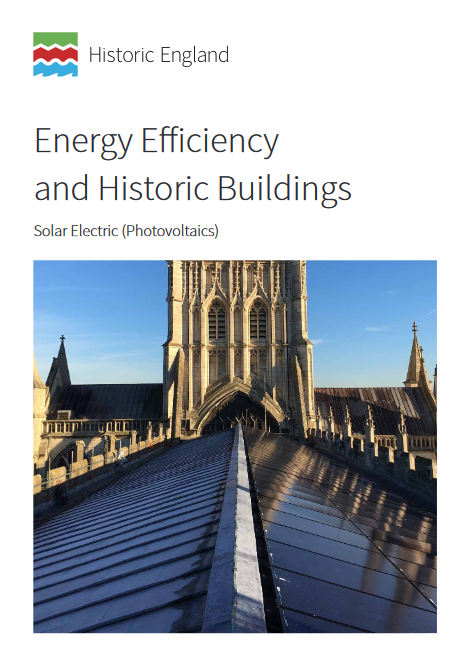This guidance covers the issues associated with installing solar photovoltaic (PV) panels on a historic building or on the land of a historic site.
 This guidance covers the issues associated with installing solar photovoltaic (PV) panels on a historic building or on the land of a historic site. It describes the different options available and how they work. Advice is also provided on how to minimise the potential damage to the fabric and the visual impact of a renewable installation on the character and appearance of the building or site.
This guidance covers the issues associated with installing solar photovoltaic (PV) panels on a historic building or on the land of a historic site. It describes the different options available and how they work. Advice is also provided on how to minimise the potential damage to the fabric and the visual impact of a renewable installation on the character and appearance of the building or site.
This guidance note is aimed at providing advice for building owners and occupiers who are considering installing solar PV panels to generate their own energy. It will also be useful for architects, surveyors, building contractors or similar building professionals who need to make the appropriate selection of equipment and method of installation to work within a historic building.
Before installation of renewables are considered, steps should be taken to cut energy consumption. Historic England has a wide variety of guidance on improving energy efficiency in historic buildings.
This document forms one of a series of notes covering the installation of renewables and low carbon technologies such as heat pumps, solar thermal and hydroelectric.
Contents
What is a PV System? – Learn about the main components of a PV system and their energy yield.
- Considerations When Planning an Installation – Impact on heritage significance, building fabric and the ecological environment are some of the considerations when planning a PV installation.
- Consents and Permissions – Find out about the consents and permissions required for installing any type of PV installation on a listed building or scheduled monument.
- Designers and Installers – How to find PV designers and installers, and a helpful checklist of questions to ask them.
- Fire Risk Assessment and Emergency Planning – Although fires in PV systems are rare, they can pose fire risks, so assessment, mitigation measures and emergency planning must be carried out.
- Installing PV Arrays on Buildings – This page gives an overview of PV array installation options for pitched and flat roofs.
- Ground-mounted PV Arrays – Guidance on installation, cabling and frame design considerations for ground-mounted PV arrays.
- Electricity Distribution and Storage – Learn about the two key types of electrical supply in PV systems: grid connected and off grid.
- Maintenance, Inspection and Testing – We have compiled a maintenance checklist to help you keep your PV system operating efficiently.
- End of Life and Recycling – These PV system recycling and disposal considerations will help to mitigate environmental impacts at the end of their life.
End of Preview
